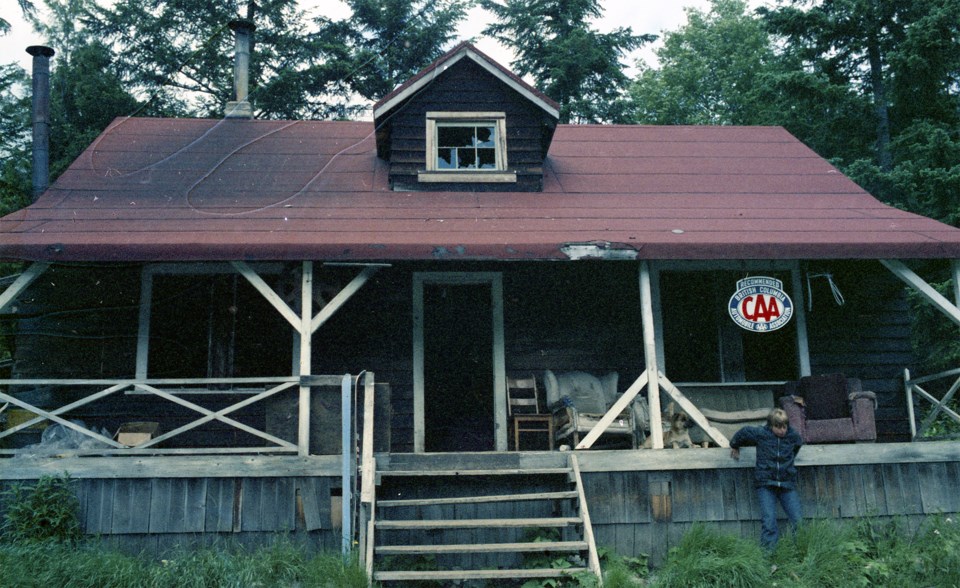In the spring of 1973, a group of Whistler residents who had been renting a property together took a photo as a memento before they moved out. Fifty years later, that photo is best known as the Toad Hall Poster, and is widely recognized for its nudity and carefree spirit. While many people who come into the Whistler Museum know of the poster, we’ve heard a lot of different origin stories for the image, and a range of names for those it depicts.
If you had arrived in the Whistler area in the late 1960s and asked where to find Toad Hall, you might have been directed to an entirely different building than the one featured in the Toad Hall Poster. The first Toad Hall in Whistler was a house built beside Nita Lake by Alf Gebhart in the 1950s. Alf and his wife Bessie moved their family to Alta Lake in 1936, when Alf purchased a sawmill and lumber camp. After operating the mill for some years, Alf built a house where he and Bessie lived until the closure of their sawmill. The house was then occupied by Alf’s son Howard and his wife Betty while Howard was working for the railway. When they left the valley as well, the house was sold to Charles Hillman, a teacher living in Vancouver.
Hillman began renting out his house soon after lifts opened on Whistler Mountain in 1966, and it was some of his tenants who gave it the name of Toad Hall. Tenants came and went over the next few seasons, and by the time Hillman decided that he wanted to start using his house as a ski cabin, it would appear that none of the original tenants he had rented to were left. Those who were living there were reportedly amicably evicted, and the Toad Hall name moved to a different property.
Before it became known as Toad Hall, the property operated as the Soo Valley Logging Camp. The camp, which included a collection of small cabins, was located at the north end of Green Lake, across the lake from the Parkhurst mill site. The logging camp can be seen in the background of some of the photographs taken by the Clausen family, who lived at Parkhurst in the 1950s. By the 1970s, however, the mill at Parkhurst was long closed, and the Soo Valley Logging Camp no longer housed loggers.
In the early 1970s, the Soo Valley property housed skiers looking for affordable housing near Whistler Mountain. The entirety of the property was reportedly rented for $75/month (adjusted for inflation, that would be just over $500/month today), which could be quite reasonable when divided amongst enough residents. By 1973, this second Toad Hall was a popular place to find a party or a bed. Unfortunately, however, for those who found a home there, the buildings were scheduled to be demolished that summer, and their days at Toad Hall were numbered. The end of Toad Hall was marked by the creation of the Toad Hall Poster.
While we know some of the stories behind Whistler’s Toad Halls, there are a lot of things we don’t know. How did two different properties on two different lakes come to be named after the home of Mr. Toad from The Wind in the Willows? In a time long before there were dedicated Facebook groups for housing in Whistler, how did people hear about and find Toad Hall from across the country?
We’re looking forward to finding out more about Toad Hall from a few former residents on Wednesday, April 26, when we’ll be joined by John Hetherington, Terry “Toulouse” Spence, and Paul Mathews at the Whistler Museum for our next Speaker Series. Tickets are available at the Whistler Museum and all are welcome.




